|
What do you think when you see this meme? It's ok if your immediate reaction is to chuckle, but the reality is that the rise in pet obesity is staggering and alarming; it is estimated that over 45 percent of dogs in Canada are overweight. What do I mean when I ask if your dog is wearing a tank top or a parka? Think about it for a second, when you wear a tank top on a warm summer day, you look and feel lighter. But on the other hand, wearing a warm, thick parka in the winter makes you look and feel heavier due to that extra thick layer. So, in the context of our dogs, are they at an ideal weight (tank top)? Or are they carrying extra pounds (parka)? This blog is part one of a two-part series with facts and research about obesity in pets and, more importantly, what we can do to prevent and treat it. Whether your dog is a sport dog, an active dog, or a couch potato, extra weight is not suitable for them. Attending various agility events and seeing overweight dogs competing in a physically demanding sport is hard for me, so I wanted to write this blog series. Discussing weight management can be a touchy subject, but it's time that we normalize this conversation and not let it slip through the cracks. Why do we need to address this issue? Because the additional, unnecessary weight on our pets can lead to multiple negative consequences. Take a look: So, picture this; if decreased life expectancy is one of the consequences of obesity in humans, what does that mean for our canine companions whose life is already shorter than a person's? I selfishly admit that I want my dogs to live as long as possible, so I focus on aspects of their health care that I CAN control. There is so much out of our control (e.g. genetics, accidents, idiopathic diseases), but diet and weight are something that we, as pet owners, can control." Coach Carolyn McIntyre, PT Here's some research to back this up:Salt et. al. (2019) completed a retrospective case-control study evaluating the association between life span and body condition in 50,787 dogs from 900 veterinary hospitals in North America. They considered 12 different breeds of dogs between 6.5 to 8.5 years old. For all breeds, the instantaneous risk of death for dogs in overweight body conditions was more significant than those in average body conditions. Furthermore, in some breeds (e.g. Yorkshire Terriers), their life span was shortened by 2.5 years when being overweight! Check out the chart below comparing the 12 breeds in this study and how their life span changes when they're in normal weight condition versus when they're overweight. At first glance, you can see that those overweight dogs never lived longer. Although this research method has its own biases (retrospective, survey-based) and only 12 breeds were studied, I can likely ascertain that the same effect is present in other breeds. I have never seen a study (either on humans or dogs) where extra weight is recommended or has added value. Moreover, human research showed that an extra 1 lb in body weight increased by 4 lbs of load on joints (Messier, 2005). Imagine what an extra 1-2 lbs can do for a four-legged animal. For the performance dog, excess weight puts additional stress on their:
So, what has caused the pet obesity crisis?So, what has caused the pet obesity crisis? There are a few factors that I believe are contributing to this global problem:
What can cause obesity in dogs?Obesity in dogs is multifactorial, which means it isn't always just ONE thing causing your pet's extra weight - it can be several factors. The most common causes of pet obesity include:
Now that we understand the health implications and common causes of obesity, the next step is to figure out whether your dog's weight is a concern. Now you ask, Carolyn, how do I even know if my dog is overweight?That is a great question; the first step is to have a starting point. We must start by learning what a healthy weight looks like on our dogs. We can't compare apples to pears. If you have a husky and your next-door neighbour does too, but yours is a 6-year-old male, and theirs is a 1-year-old female, their ideal healthy weight will be different. The chart I like to use is the Purina Body Conditioning Scale (see below). As a rule of thumb, you should be able to feel and see (depending on how much fur your dog has) the three back ribs when your dog is standing naturally. 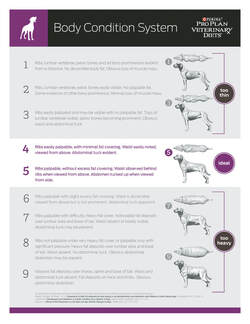 Ideally, dogs should be in the 4-5 range. Click here to watch a helpful video on how to perform a BCS (Body Condition Score) on your dog.Another essential aspect to consider is your dog's weight-to-height ratio.The weight-to-height ratio is not an objective test that has been extensively evaluated, but it can give you an idea of the strain that extra weight can have on our dog's systems. Dogs with a weight-to-height ratio of > 2.5 are at high risk due to higher pressure/load on their musculoskeletal system, which can increase their chances of injury - especially on dogs who train and compete in various canine sports. In the example shown above, the dog's weight-to-height ratio is 2.75, which puts the dog at a greater risk. Even SLIM large breed dogs (boxer, Newfoundlander, livestock dogs) already have more weight on them because of their frame and the way they're built - imagine what extra weight can do to their joints, ligaments, muscles etc. So the bottom line is that we HAVE to watch our dog's weight. Although the weight-to-height ratio evaluation has yet to be extensively evaluated in the research setting, Sellon et al. (2018) also found in their cross-sectional, retrospective study that a higher weight-to-height ratio showed a 1.5x greater risk of having a digit injury. This finding could likely place a tremendous strain on other areas of the body as well! Now that I've provided you with some facts and research, you may wonder, "how do I prevent my dog from being overweight?" or "what can I do if my dog is overweight?" Stay tuned for part 2 of this blog, which will be released next Friday. I will share some tools and strategies to make a difference in your dog's weight loss journey or prevent excess weight gain. In the meantime, let me know in the comments section - after assessing your dog's body condition, do you think they're wearing a tank top or a parka? References
AuthorHi, I’m Carolyn McIntyre, an animal rehabilitation trainer and registered physiotherapist. I am the owner/operator of McIntyre Canine Rehabilitation located in Erin, Ontario, Canada. I specialise in helping canine athletes reach superior physical performance while minimising injuries and boosting longevity in their sport. In addition to offering sport-specific conditioning programs to my international clients, I have a wide variety of online conditioning courses (foundation through to advanced) as well as a personalised Path to Success Coaching Program. I am the author of “Warm Up and Cool Down of the Canine Athlete: An Evidence-Based Approach to Improving Performance and Preventing Injury”. I was the canine physio practitioner for the 2019 and 2020 Canadian agility team that competed at the IFCS World Agility Championships. I am currently a WAO Team Canada member with my dog Shades.
4 Comments
Michelle
2/24/2023 10:35:20 am
Thanks so much for addressing this important and yet largely unacknowledged issue. It's always a tricky one to deal with as a veterinarian (especially if the owners are also overweight!) but seeing fat dogs is like seeing fat children - absolutely tragic. I hope we can gradually get the public's barometer of what a normal dog should look like back down to something more reasonable.
Reply
Carolyn McIntyre
2/28/2023 02:49:08 pm
Thanks for the comment! Couldn't agree with you more! It is def a sensitive topic but we need to address the elephant in the room and get more awareness out there. There is nothing good that comes from extra weight!!
Reply
Lisa
2/24/2023 12:10:08 pm
Hi.
Reply
Carolyn McIntyre
2/28/2023 02:50:02 pm
Thank you for sharing your journey with your Aussie! Happy to hear that he has made a full recovery and is back to agility in tip top shape and form! YAH!!! Well done!
Reply
Leave a Reply. |
AuthorCarolyn McIntyre Archives
March 2024
Categories
All
|


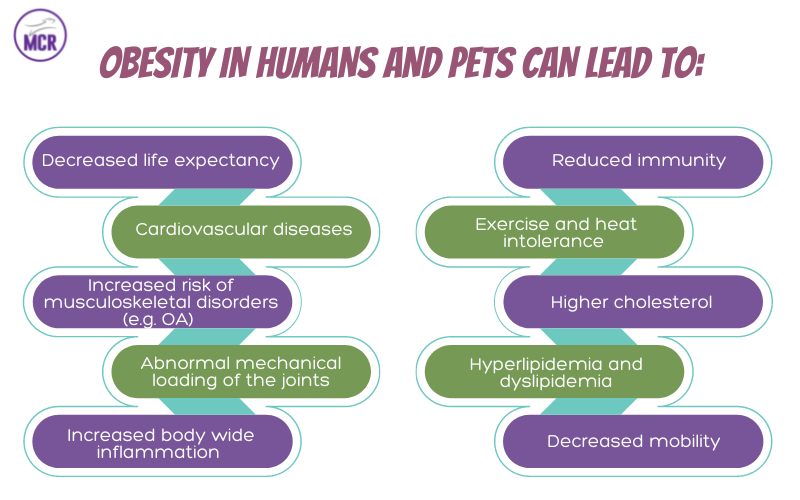
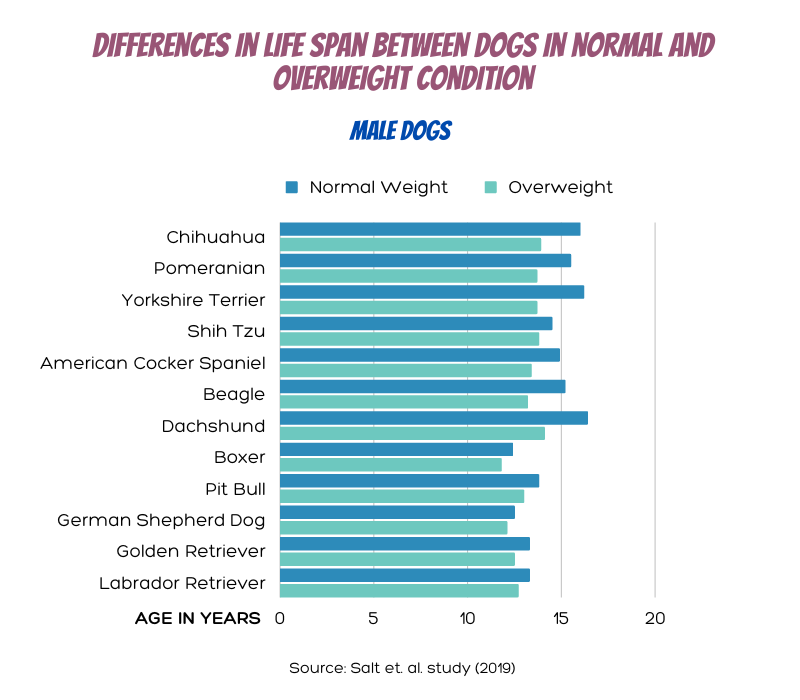
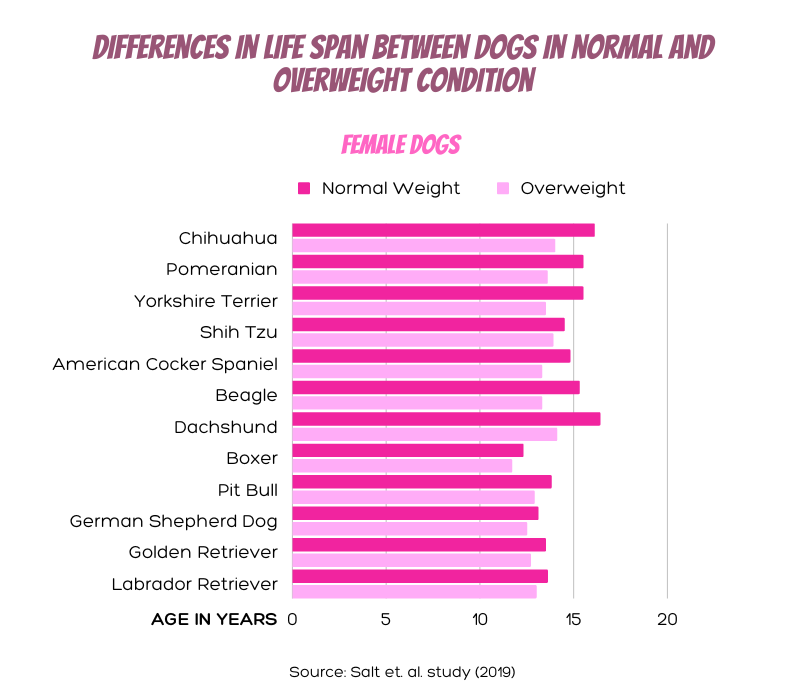
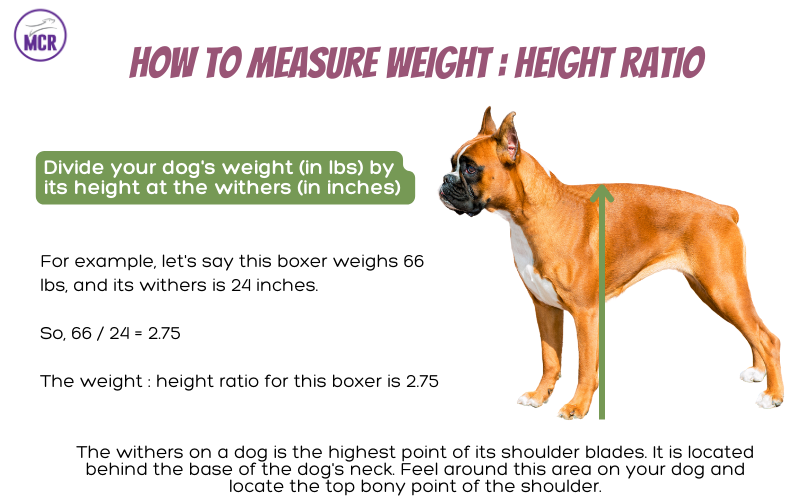
 RSS Feed
RSS Feed